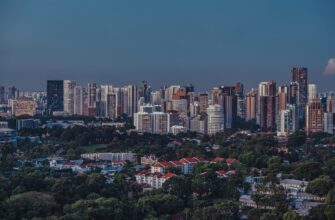Bitcoin’s volatility continues to attract traders seeking automated strategies, and grid bots on Binance offer a compelling solution. As we approach 2025, leveraging daily timeframe grid trading could unlock consistent returns in sideways or trending markets. This guide explores how to optimize Bitcoin grid bots on Binance for the daily chart, balancing risk and reward in the evolving crypto landscape.
**Understanding Grid Trading Bots**
Grid trading bots automate buying low and selling high within predefined price ranges. They place multiple limit orders above and below the current price, creating a “grid.” When Bitcoin fluctuates, the bot profits from small price movements. Key components include:
* Upper and lower price boundaries defining the trading zone
* Number of grids determining order density
* Order size per grid level
* Take-profit triggers at each grid level
For daily timeframe strategies, grids span weeks or months, capturing broader market swings while minimizing emotional decisions.
**Why Bitcoin Grid Bots on Binance in 2025?**
Binance remains the world’s largest crypto exchange, offering robust API support and integrated grid bot tools. In 2025, Bitcoin’s maturation could reduce extreme volatility while maintaining daily fluctuations ideal for grid strategies. Advantages include:
1. Liquidity: Binance’s deep order books ensure minimal slippage
2. Regulatory compliance: Enhanced security for long-term positions
3. Fee structures: Competitive trading costs for high-frequency bots
4. Market cycles: Potential sideways action post-halving creates optimal grid conditions
**Setting Up a Daily Timeframe Bitcoin Grid Bot on Binance**
Implementing a 2025-ready strategy requires careful configuration:
1. Define Price Range: Analyze Bitcoin’s 1-year daily chart. Set upper/lower bounds at key support/resistance levels (e.g., $50,000-$80,000 range)
2. Grid Density: 15-30 grids for daily charts balance frequency and profit per trade
3. Order Size: Allocate 1-3% of capital per grid to manage risk
4. Activate AI Parameters: Use Binance’s volatility-based AI to auto-adjust grids during trends
5. Backtest: Simulate against 2023-2024 data using Binance’s historical candles
Monitor weekly and adjust ranges if Bitcoin breaks major technical levels. Pair with stop-loss triggers to protect against black swan events.
**Benefits and Risks of Daily Grid Trading**
Pros:
* Profit in sideways markets where traditional strategies fail
* Reduced emotional trading with 24/7 automation
* Compounding returns from frequent small wins
* Lower exposure than spot holding during downtrends
Cons:
* Significant drawdown if Bitcoin exits the grid range abruptly
* Exchange fees erode profits in low-volatility periods
* Requires technical analysis skills for optimal range-setting
* Potential API disruptions affecting order execution
**2025 Optimization Tips**
Maximize your Bitcoin grid bot performance:
– Correlate grids with Bollinger Band width to detect volatility shifts
– Scale grid density inversely with volatility: More grids in stable periods, fewer during high volatility
– Use 10% of profits monthly to widen price ranges as Bitcoin grows
– Combine with fundamental alerts (e.g., ETF inflows, regulatory news)
– Test hybrid approaches: Grid bots for accumulation, manual trades for breakouts
**Frequently Asked Questions**
Q: How much capital do I need to start?
A: Binance allows grid bots with as little as $100, but $1,000+ is recommended for daily timeframes to absorb fees and volatility.
Q: Can grid bots lose money?
A: Yes. If Bitcoin trends strongly outside your grid range without reversal, unrealized losses accumulate. Always use stop-loss orders.
Q: How do Binance fees impact daily grid bots?
A: Each completed trade incurs 0.1% fees (lower for VIP users). In high-frequency grids, this can consume 20-30% of profits. Factor this into backtesting.
Q: Should I use AI settings or manual parameters?
A: In 2025, AI optimization is preferable for new traders. Experienced users may prefer manual control during known market cycles (e.g., post-halving phases).
Q: How often should I adjust my grid?
A: Review performance weekly. Adjust ranges only after major technical breaks (15%+ beyond boundaries) to avoid overtrading.
Mastering daily timeframe grid bots requires patience and adaptability. As Bitcoin evolves, this automated approach could become a cornerstone of disciplined crypto investing. Start small, backtest rigorously, and let the grid work through Binance’s battle-tested infrastructure.








